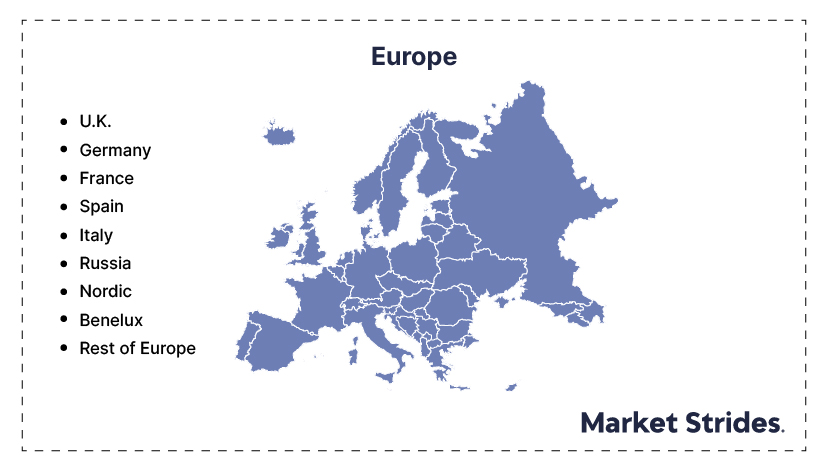The Europe smart airbag coats market size is expected to grow at a CAGR of 10-12% during the forecast period (2025–2033). The rise of e-bikes and electric motorcycles in Europe is fueling demand for advanced protective gear. Countries like the Netherlands and Germany, with high urban cycling populations, are seeing growing interest in airbag coats for enhanced rider safety.
Smart airbag coats are advanced protective garments equipped with built-in airbags designed to reduce injury risks during accidents. These coats use sensors and AI-driven technology to detect sudden impacts, abrupt deceleration, or falls, triggering rapid inflation within milliseconds. Originally developed for motorcyclists and motorsports, they are now expanding into cycling, equestrian sports, industrial safety, and law enforcement. Unlike traditional protective gear, smart airbag coats offer full-body protection, covering vital areas like the chest, back, shoulders, and neck.
The growing emphasis on personal safety is a key driver for the Europe smart airbag coats market growth. Governments and regulatory bodies are actively promoting advanced protective gear for motorcyclists and other high-risk users.
Such measures, alongside rising consumer awareness and technological advancements, are accelerating the adoption of smart airbag coats across Europe’s motorcycling and outdoor sports sectors.
The high cost of smart airbag coats remains a significant restraint in the European market, limiting widespread adoption. These advanced safety garments integrate cutting-edge technology, including AI-driven sensors and rapid-deployment airbags, making them expensive to manufacture. As a result, premium brands like Dainese and Alpinestars price their products beyond the reach of many consumers. Moreover, reactivation costs after deployment add to the long-term expense. While some governments and organizations promote airbag vests, subsidies remain limited.
The integration of smart airbag coats with connected mobility and safety systems presents a significant opportunity in the European market share. As vehicles and infrastructure become more interconnected, wearable airbag technology can enhance real-time accident prevention and response.
Similar innovations can integrate with IoT networks, enabling automatic alerts to emergency services, vehicle-to-rider communication, and advanced crash detection, making smart airbag coats an essential component of Europe’s evolving road safety ecosystem.
| ATTRIBUTES | DETAILS |
|---|---|
| Study Period | 2021-2033 |
| Historical Year | 2021-2024 |
| Forecast Period | 2025-2033 |
| By Product Type |
|
| By Deployment Type |
|
| By End-User Application |
|
| Regional Insights |
|
Jacket-integrated airbag systems dominate the European market due to their seamless combination of protection and style. Leading brands like Dainese and Alpinestars offer these smart jackets with built-in airbag technology, appealing to motorcyclists and extreme sports enthusiasts. Their popularity stems from convenience, as they eliminate the need for separate attachments while ensuring optimal safety. Moreover, the rising demand for all-weather safety gear in countries like Germany and France further boosts this segment’s dominance.
The electronic sensor-based segment leads the market as it provides faster, more precise activation compared to mechanical triggers. Advanced systems, such as Dainese’s D-air and Alpinestars Tech-Air, utilize sophisticated algorithms to detect sudden movements and deploy airbags instantly. This segment is particularly strong in technologically advanced markets like Germany and the UK, where motorcyclists and athletes prioritize cutting-edge safety gear. The demand for smart protective wear in high-risk sports further solidifies this segment’s leadership.
Motorcycling remains the largest end-user application due to the high number of riders and stringent safety regulations across Europe. Countries like Italy, France, and the UK have a strong motorcycle culture, leading to greater adoption of airbag coats. Motorcycle racing events like MotoGP have also driven demand as professional riders increasingly rely on advanced airbag technology. Brands such as Helite and Dainese cater to this segment, making motorcycling the most influential market for smart airbag coats.
The market is witnessing strong growth, driven by increasing safety regulations and rising awareness among motorcyclists, sports enthusiasts, and industrial workers.
In Germany, a country known for its extensive motorcycle culture and strict road safety laws, manufacturers like Helite and Dainese are expanding their smart airbag offerings. The German government’s Vision Zero initiative, which aims to eliminate road fatalities, has encouraged the adoption of advanced protective gear, including airbag jackets.
In France, motorcyclists have embraced smart airbag technology due to stringent safety laws. In 2023, the French government made high-visibility vests mandatory for riders, boosting demand for airbag-equipped versions. French brand In&motion has partnered with major motorcycle manufacturers to integrate smart airbags intoriding gear.
Moreover, Italy, home to leading motorcycle brands like Ducati, has seen increasing adoption of airbag jackets, especially in motorsports. The Italian Motorcycle Federation has mandated airbag systems for professional racing, pushing innovation and adoption in the broader consumer market.
In Spain, authorities are actively promoting airbag vests for law enforcement and general riders, following a surge in motorcycle accidents. Meanwhile, the UK is seeing growing interest in connected safety gear, with brands developing IoT-enabled airbag coats for motorcyclists and cyclists.




